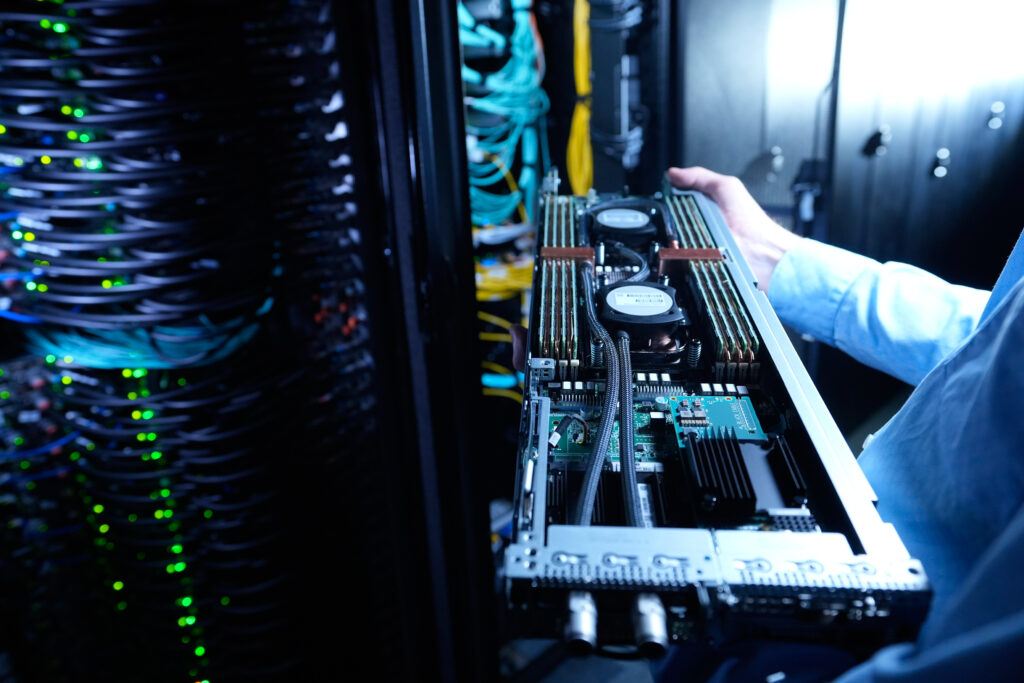ASIA ELECTRONICS INDUSTRYYOUR WINDOW TO SMART MANUFACTURING
BASF Reinforces R&D, Simulation With New Supercomputer
BASF has started up a new supercomputer at its Ludwigshafen site to replace the existing one. Accordingly, the new supercomputer, with 3 petaflops of computing power, is more powerful than its 1.75 petaflop predecessor.
“Digital technologies are among the most important instruments to further expand our research and development capabilities,” said Dr. Melanie Maas-Brunner, member of the Board of Executive Directors and Chief Technology Officer of BASF.
For example, she noted that above-average computing power is essential to work out the most promising polymer structures from thousands of possibilities. “Over the past five years, we have worked very successfully worldwide with our supercomputer Quriosity. It enabled us to considerably shorten the development time for innovative molecules and chemical compounds and thus accelerate the market launch of new products,” Maas-Brunner said.

In addition, Maas-Brunner added, “But the computing capacity was no longer sufficient. Moreover, the complexity of our research projects and thus the demands on the supercomputer have increased. We therefore decided to invest in a new high-performance computer.”
Hewlett Packard Enterprise (HPE) manufactured the new supercomputer and works with AMD processors. It has an innovative cooling concept based on warm-water cooling. The system absorbs the heat directly from the supercomputer and transports it away, which significantly reduces the energy required and therefore the operating costs. The new BASF supercomputer, named Quriosity like its predecessor, is the world’s largest supercomputer used in industrial chemical research. The previous supercomputer will be refurbished by HPE, with a recovery rate of more than 95 percent.
Propels New Research Approaches
In addition to its own on-site supercomputer, BASF also plans to use cloud computing power. “This hybrid solution offers us the best possible technical and operational flexibility,” said Maas-Brunner. “It allows us to handle requests requiring exceptionally large processing power as well as work on special tasks that our own supercomputer is not designed for.”
As a digital tool, the supercomputer is an enormous timesaver. Calculations that would have taken around a year in the past can be carried out by a supercomputer in just a few days.

This has not only reduced product development times: “We were able to identify and utilize previously hidden connections to drive completely new research approaches,” said Maas-Brunner.
“Modeling, virtual experiments and simulations are becoming increasingly complex and require more computing power. With the new supercomputer, which is approximately twice as fast, we can now provide our researchers with the necessary computing power.”
Entire company using Quriosity since 2017
The Quriosity supercomputer has been deployed at BASF since 2017. Since then, it has carried out an average of 20,000 tasks per day and is used by more than 400 employees worldwide. For example, in the personal care business area, the supercomputer’s complex simulations help researchers to better understand the composition of personal care products and more precisely predict which cosmetic ingredients harmonize optimally together to achieve the desired effect.
Simulations also help to plan and optimize reaction processes. For example, the distribution of substances and the temperature in a reactor can be simulated and this information can be used to continuously improve production. At an early development stage for crop protection products, using molecular modeling the supercomputer can quickly identify suitable compounds which will be effective and environmentally sound.
However, the supercomputer is also used in projects outside of research and development. It helps, for example, to optimize the fluid dynamicsof plant components in production operations.




